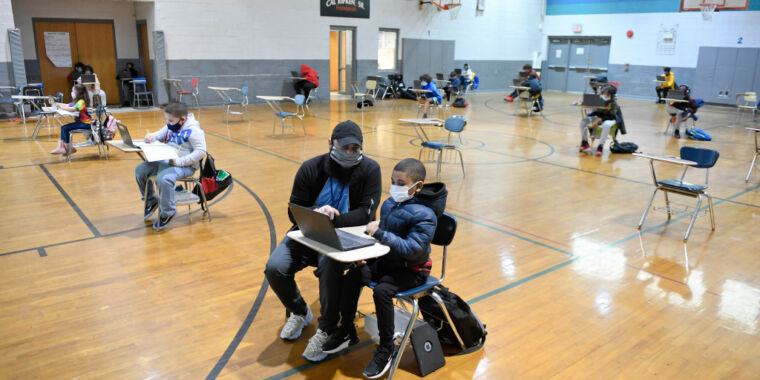
Can schools be kept open safely, even while the COVID-19 pandemic remains largely uncontrolled? So far, the data has been mixed. Dissemination studies in schools seem to suggest that they are not the main source of infections. But when countries that closed their schools as part of a package of pandemic restrictions were compared to those that did not, those that had closed schools had a lower overall infection rate. So the history of opening schools seems a little confusing.
Yesterday, the CDC released a detailed analysis of the spread of SARS-CoV-2 in a single school system in rural Wisconsin. Although the results come from a time prior to the evolution of new strains that are easier to spread, they show that some of the measures set out in the guidelines on how to reopen schools safely work. Thanks to these precautions, infections at school decreased by 37 percent compared to infections in the wider community, and very few infections occurred at school. But it also raises an obvious question: if these measures work, why don’t we use them all?
Proper care
The study began in late August 2020 and continued until the end of November. He focused on schools in Wood County, Wisconsin, and tracked infections that occurred among his teachers and staff, and compared them to the spread of the pandemic in the county as a whole. Overall, there were 4,876 students and 654 employees included in the data.
Schools took many of the measures that experts advised before the start of the school year. All students received several face masks at the beginning, and the use of the mask was mandatory throughout the period. Compliance with this rule, based on surveys with teachers, was consistently above 90 percent. (The report notes, however, that not all teachers returned these reports, so there is a chance that data is missing from classrooms where compliance was poor.)
In addition to the masks, schools maintained small classes, with 20 students or less. And these groups of students were kept together throughout the day, instead of mingling throughout the day. All students with symptoms of COVID-19 were sent home for isolation, and all the siblings they had were equally prevented from attending school. The report provides no information as to whether changes in classrooms – greater separation of students or better ventilation – were also included in the precautionary package taken. But in general, these policies are in line with the health authorities’ recommendations for safe education.
Out of control
And schools have been subjected to a severe test. As with most of the rest of the United States, COVID-19 cases in the county exploded in the fall. Wood County sometimes had a 40 percent positivity rate, meaning that four out of 10 SARS-CoV-2 tests produced a positive result. This is considered an indication that there are many more positive cases at the same time that they were not detected.
Overall, the case count among students and staff was significantly lower than in the surrounding community. The rate in neighboring cities during the period was almost 5,500 cases per 100,000 people. In contrast, students and staff had a rate of 3,450 cases per 100,000 people. This translates into 191 cases in total: 133 in students and 58 in employees.
Tracking contacts indicates that only seven of these cases were captured through school transmission, with all involving student-to-student distribution. All seven cases involved dissemination among students in the same classroom group. In fact, three of them took place within a single classroom group. The lack of dissemination among classroom groups is a reassuring validation of this strategy.
The biggest limitation of the analysis is that the testing capacity was clearly not sufficient to track the spread of infections during the study period. There is a good chance that some asymptomatic cases were missed at school during this period, which may influence the conclusions of the contact tracking part of the experiment. As such, the seven cases attributed to the spread within the school must be seen as a lower limit.
There are a few ways to examine this data. The first are the obvious ones: it is not impossible to eliminate the risk during an uncontrolled pandemic. But with proper precautions, it is possible to limit the risk to students and severely limit the chances of getting new infections at school.
But the main message is that it is impossible to separate students from the larger community. While infections among students declined in relation to the general population, a significant number of students ended SARS-CoV-2, and most of these infections came during interactions that occurred outside the school system. Which raises the obvious question of whether the general population would have benefited from the adoption of more practices used by schools.
With more infectious strains becoming widespread and vaccine distribution struggling to progress, it is critical that we adopt anything that can be done to limit the spread in the meantime.
